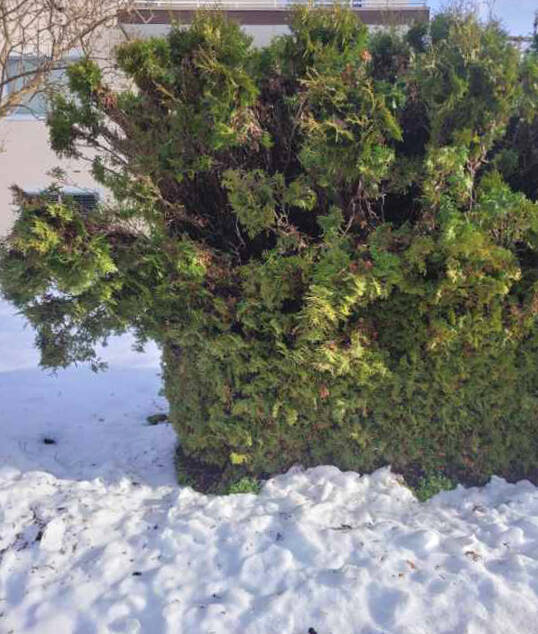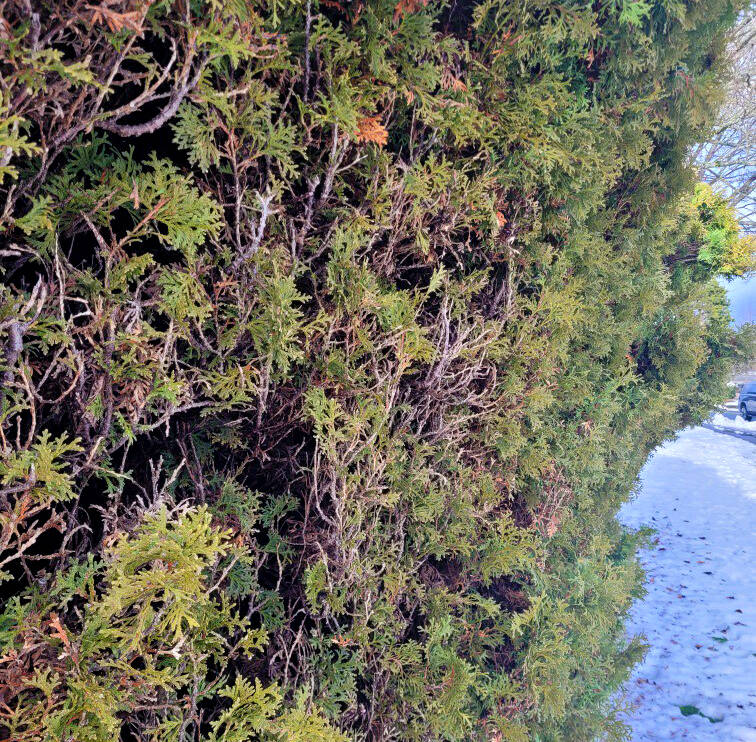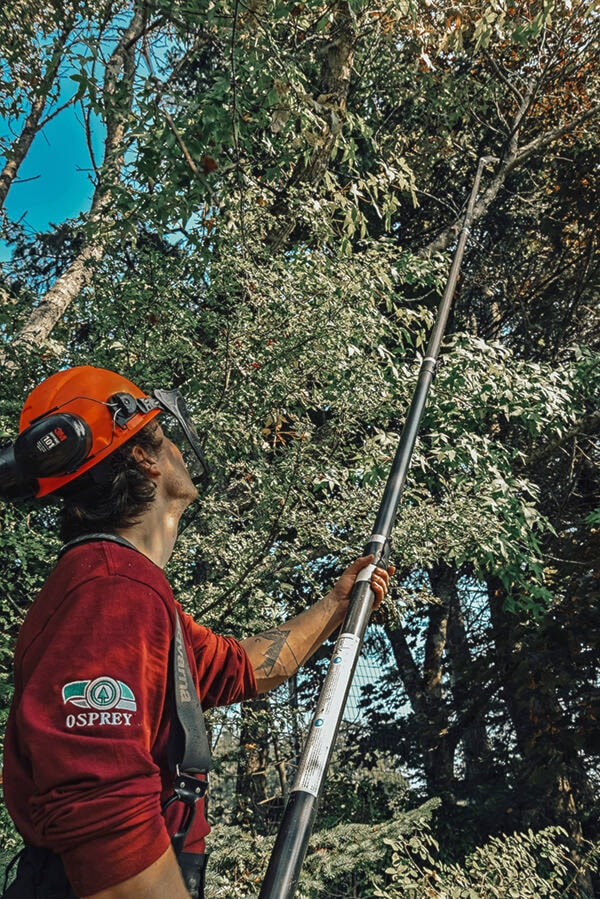La Niña has brought sustained wintery conditions to Vancouver Island, and ISA Certified Arborist Chris McVey from Osprey Tree Service is already seeing the effects on local trees and hedges. He’s back with answers to more of your winter tree maintenance questions.
Should you remove snow from trees?
“Snow and ice can weigh branches down and cause them to break,” Chris says. “Check your trees after a heavy snowfall, and if you can, brush off snow with a broom or hockey stick.”
Dead or broken branches on trees and hedges may fall during a winter storm. If you see a larger branch showing signs of cracking or shearing, call an arborist to have it safely removed and to prevent more serious damage.

Is it OK if deer and other animals eat the bark on your tree?
“It’s common for rodents to eat tree bark to survive the winter, but if they expose the trunk they can girdle the tree, eventually killing it,” Chris says.
Prevention tips:
- Wrap the lower trunk of the tree in a fine metal mesh.
- Apply a mix of bone meal (available at most landscaping stores) to the soil. The smell repels deer, and bone meal also adds valuable nutrients to the soil.
- To ward off deer eating fresh growth on hedges, use the fungicide Thiram (available in most landscaping stores). “If it’s diluted, you can spray it directly on the tree or hedge. You can also dip a heavy cloth into more concentrated Thiram and hang it near the affected tree,” Chris says.

How can you tell if road salt is harming your trees?
“A buildup of salt can harm the soil, which will eventually threaten trees or shrubs. The damage can be subtle at first, but watch for disfigured or curled foliage, yellowed leaves caused by chlorosis, and stunted growth. If you’re not sure, consult an arborist,” Chris says.
Minimize damage to your soil by shovelling before you salt, and choosing a calcium-chloride-based road salt.
“If you’re positive you have salt damage, you can help your tree by heavily irrigating deep into the soil to try and flush out the salt.”
Osprey Tree Service is based on the West Shore of Victoria, BC and serves southern Vancouver Island and the Gulf Islands. Their qualified team of certified arborists, forestry professionals and wildland firefighters offers residential and commercial tree removal, maintenance and assessments. Learn more at ospreytreeservice.ca. For a free quote, call 250-474-7993 or email info@ospreytreeservice.ca.
